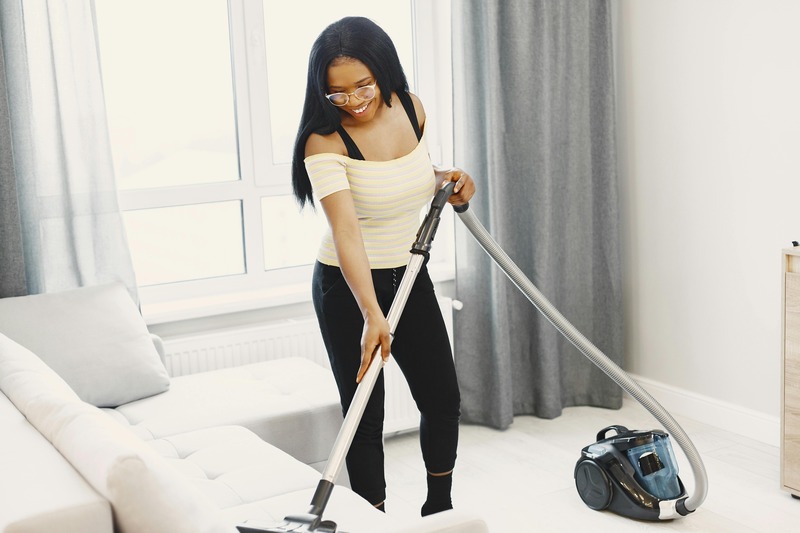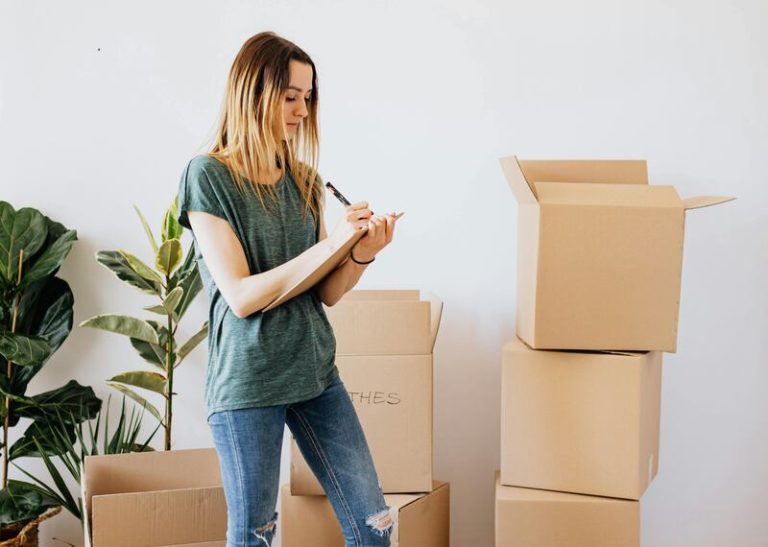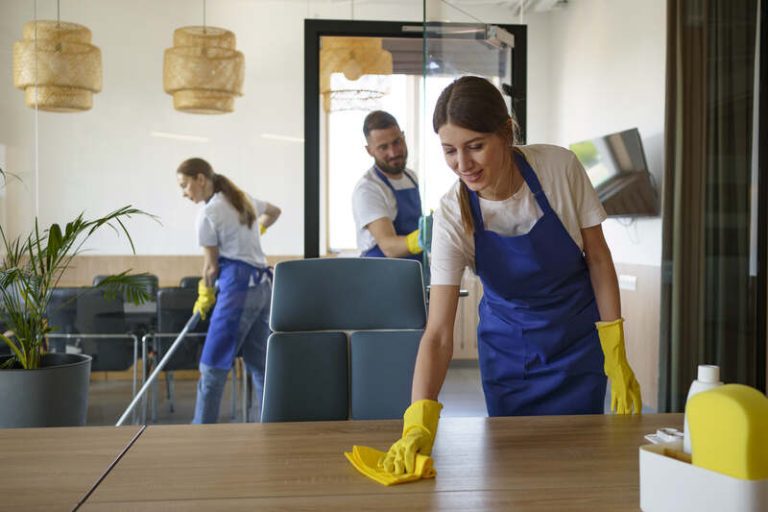Have you ever thought about the importance of keeping your sofa clean? From hygiene and health benefits to extending its life and maintaining its appearance, regular cleaning of your sofa is essential. Hence, it is important to know how to clean sofa.
Your sofa is not just a piece of furniture; it’s a place where you relax, spend time with loved ones, and create memories.
In this article, we will discuss the steps of preparation, and cleaning, some easy sofa cleaning tips, specific methods for various materials, maintenance tips, and finally, how to enjoy a fresh and clean sofa.
The Importance of Cleaning Sofa
Before talking more about how to clean sofa, you should first understand the importance of this activity. Maintaining a clean sofa is very important for several reasons, namely:
a. Hygiene and Health
Regularly cleaning your settee is crucial for maintaining good health. It eliminates dust mites, allergens, and other harmful particles that can impact your respiratory system and overall well-being. This routine cleaning prevents the growth of bacteria and germs, which can cause infections and skin irritation. A clean settee not only reduces allergens but also improves indoor air quality, minimizing the risk of respiratory problems. By keeping your settee clean, you’re creating a healthier environment for yourself and your loved ones.
b. Prolonged Lifespan of Your Sofa
Regularly cleaning and maintaining your settee extends its lifespan significantly. Prompt removal of dirt, stains, and debris prevents wear and tear that shortens its lifespan. Vacuuming upholstery, spot-cleaning spills, and rotating cushions are key practices. Use gentle cleaning solutions and follow manufacturer’s instructions for tougher stains to avoid fabric or leather damage. Additionally, protect your settee from direct sunlight and moisture to maintain its structural integrity.
c. Appearance and Aesthetics
A clean settee elevates your living space. Regular cleaning preserves its colour, texture, and overall look, creating a warm and inviting atmosphere. Deep cleaning twice a year tackles dirt buildup and extends its life. Consider fabric protectors for added stain defense. Regular cushion rotation and fluffing maintain shape, while avoiding direct sunlight and using gentle spot cleaning methods for mishaps ensure your settee continues to be a beautiful and functional part of your home.
Preparation for Sofa Cleaning
Before you embark on cleaning your settee, proper preparation is key to achieving effective and safe results. Here is a further explanation of how to clean sofa in the preparation stage that you can understand.
a. Gather Cleaning Supplies
To effectively clean your settee, gather the necessary cleaning supplies such as a handheld garment steamer, gentle fabric cleaner, microfibre cleaning cloths, and a soft brush attachment for your hoover. Having the right tools at hand ensures a thorough and successful cleaning process.
Plus these essentials, having a good stain remover specifically formulated for upholstery can be a lifesaver for dealing with spills and stains. White vinegar diluted with water serves as a versatile and eco-friendly solution for removing odours and disinfecting cushions. Another handy item to have is the bicarbonate of soda, which helps in absorbing moisture and eliminating pet odours.
If you prefer natural cleaning methods, consider using a mixture of lemon juice and water for a fresh citrus scent and added antibacterial properties. A lint roller can also be useful for quickly picking up pet hair and light debris from your settee. Don’t forget to check local shops or online platforms for sustainable and biodegradable cleaning products to minimise environmental impact.
b. Read the Manufacturer’s Instructions
Before starting any cleaning procedures, carefully review the manufacturer’s instructions that came with your settee. These guidelines provide valuable insights into the recommended cleaning methods, suitable products, and any precautions to take to preserve the settee’s fabric and structure.
Failure to follow these instructions could result in damaging the upholstery or even invalidating any guarantees associated with the settee. For instance, if your settee has a ‘W’ code on the care label, it means you can use a water-based cleaner. On the other hand, an ‘S’ code indicates that only solvent-based cleaners should be used. Understanding these symbols correctly is crucial for maintaining the longevity of your settee without causing any harm.
c. Test for Colourfastness
To prevent colour damage or fading, it’s essential to conduct a colourfastness test on an inconspicuous area of the sofa before using any cleaning solutions. This simple test ensures that the fabric can withstand the cleaning products without adverse effects on its colour or texture.
A colourfastness test serves as a precautionary measure to safeguard the integrity of your sofa’s fabric.
Begin by mixing a small amount of the proposed cleaning solution with water in a container. Dip a clean white cloth in the solution and gently blot it on the inconspicuous area. Observe the cloth for any colour transfer or changes in the sofa’s fabric.
This preliminary assessment is crucial in preventing potential mishaps such as stain formation or discolouration during the cleaning process.
How To Clean Sofa
Cleaning your settee involves a series of steps to ensure thorough and effective removal of dirt, stains, and odours. From hoovering the surface to spot-cleaning specific areas and conducting Here is a further step-by-step explanation of how to clean the sofa that will help you understand.
a. Vacuum the Sofa
The first step in cleaning your sofa is to thoroughly hoover the surface to remove loose dirt, dust, and debris. Using a soft brush attachment, gently go over the entire sofa, including cushions and crevices, to ensure all particles are effectively lifted and extracted.
Proper hoovering is crucial for maintaining the cleanliness and longevity of your sofa. Hoovering regularly helps prevent dirt and dust buildup, which can lead to stains and fabric damage over time. It is advisable to use a low suction setting to avoid damaging delicate upholstery fabrics. Make sure to empty the hoover bag or canister frequently to maintain optimal cleaning performance and prevent the spread of allergens. By incorporating these techniques into your cleaning routine, you can keep your sofa looking fresh and inviting for years to come.
b. Spot Clean Stains
Addressing stains promptly is essential for maintaining the pristine appearance of your settee.
Using a gentle fabric cleaner or a DIY solution, carefully spot-clean any visible stains or spills on the upholstery. Remember to dab the affected area with a clean cloth help lift the stain without spreading it further. For wine stains, a mixture of water and mild dish soap can be effective after dabbing, while grease stains may require bicarbonate of soda sprinkled on the area and left overnight before hoovering.
c. Deep Clean the Sofa
For a more intensive cleaning session, consider deep cleaning your settee to remove embedded dirt, odours, and stains. Depending on the fabric type, you can use a steam cleaner, upholstery shampoo, or professional cleaning service to revitalise your settee’s appearance and hygiene.
Deep cleaning not only enhances the overall look of your settee but also plays a crucial role in maintaining a healthy indoor environment. By eliminating deep-seated grime and dust particles, you reduce the risk of allergens and microbes lurking in your furniture.
Regular deep cleaning can significantly prolong the lifespan of your settee, preventing premature wear and tear. It also helps in retaining the colour vibrancy of the fabric, keeping it looking fresh for longer durations.
d. Let the Sofa Dry
After cleaning the settee, allow it to air dry thoroughly before using it again. Proper drying is essential to prevent mould, mildew, or damage to the fabric. Open windows, use fans, or let natural airflow dry the settee completely for the best results.
When allowing your settee to dry, it’s crucial to ensure that all moisture is fully evaporated. To expedite the drying process, consider using a dehumidifier in the room where the settee is placed. A dehumidifier helps to extract excess moisture from the air, aiding in faster drying without risking damage to the fabric.
While the temptation may be there to speed up drying by placing the settee in direct sunlight, this can actually be harmful, especially for certain fabrics. Sunlight exposure can cause colours to fade or fabric to weaken.
If direct sunlight is not an option, you can place the settee in a well-ventilated area away from direct heat sources. This will aid in faster drying while preserving the integrity of the fabric.
Specific Cleaning Methods for Different Sofa Materials
Different settee materials require specific cleaning methods to maintain their quality and appearance. Whether you have a leather, fabric, or microfibre settee, understanding the appropriate cleaning techniques and products for each material is essential for effective maintenance and care. Herewith the further explanation.
a. Leather Sofas
Cleaning a leather settee requires gentle care and specialised products to preserve its natural beauty and texture. Use a mild soap solution or leather cleaner to remove dirt and stains, followed by a leather conditioner to nourish and protect the leather upholstery.
Conditioning plays a vital role in maintaining the longevity of your leather settee. After cleaning, apply a high-quality leather conditioner evenly on the surface to prevent cracking and drying. This step helps restore moisture and flexibility to the leather, keeping it supple and soft.
When choosing a conditioner, opt for a product that is specifically designed for your type of leather, whether it’s aniline, semi-aniline, or pigmented leather. Regular conditioning not only enhances the settee’s appearance but also acts as a protective barrier against wear and tear.
b. Fabric Sofas
Fabric chairs are versatile and comfortable but require regular cleaning to keep them looking fresh. So, how to clean furniture fabric at home?
Depending on the fabric type, you can spot clean with a fabric-safe detergent or upholstery cleaner or opt for professional steam cleaning for a thorough refresh.
For routine maintenance, hoovering your fabric sofa weekly can help prevent dirt and debris from settling into the fibres. When dealing with specific stains, remember to test any cleaning solution on a hidden area first to avoid potential damage. For water-based stains, dab the area with a mixture of water and a mild detergent. For tougher stains like ink or grease, consider using specialised stain removers recommended for your fabric type.
When facing stubborn odours, sprinkle bicarbonate of soda on the affected areas and let it sit before hoovering it off. This can help neutralise any unwanted smells.
For delicate fabrics, such as velvet or silk, it’s advisable to seek professional cleaning services to avoid damaging the material. So, you already know how to properly clean a fabric couch now, right?
c. Microfiber Sofas
Microfibre sofas are known for their durability and stain resistance, making them relatively easy to clean and maintain. Regular vacuuming and spot cleaning with a mild detergent or rubbing alcohol can help keep your microfibre sofa looking fresh and spotless.
One of the key advantages of microfibre sofas is their ability to repel stains due to the tightly woven fibres that create a barrier against spills. This makes cleaning spills easier and prevents them from seeping deep into the fabric. When dealing with water stains on microfibres, it’s important to avoid saturating the fabric as it can cause watermarks.
To maintain the soft texture of your microfibre sofa, you can gently brush the fabric with a soft-bristled brush or a microfibre cloth to restore its plush feel. Using a specialised microfibre cleaning solution can help remove tough stains without damaging the fabric.
Tips for Maintaining a Clean Sofa
Plus regular cleaning routines, and implementing maintenance tips can help prolong the cleanliness and condition of your settee. Simple practices such as using settee covers, rotating cushions, and avoiding eating or drinking on the settee can prevent damage and minimise the need for frequent deep cleaning.
Another effective tip is to hoover your settee regularly to remove dust, crumbs, and debris that can accumulate over time. This prevents particles from settling into the fabric and causing wear and tear.
Additionally, fluffing and reshaping cushions keep them plump and maintain their shape prolonging their lifespan. It’s also advisable to keep pets off the settee to prevent scratches and fur buildup. Lastly, position your settee away from direct sunlight, as prolonged exposure can lead to fading and deterioration of the upholstery.
Conclusion: Enjoy Your Fresh and Clean Sofa
After following the recommended cleaning and maintenance steps, you can now relax and enjoy the comfort of your freshly cleaned settee.
A clean settee not only looks better but also improves the air quality in your home by reducing the presence of dust mites, allergens, and bacteria that can accumulate over time.
Regular cleaning can also prevent odours and stains from setting in, preserving the overall appearance of your settee. A clean settee promotes a sense of well-being and relaxation, allowing you to fully unwind at the end of a long day.
Those are the comprehensive explanations on step by step how to clean sofa. From the detailed process outlined, it’s evident that sofa cleaning involves several stages, each crucial for achieving optimal results. From vacuuming to spot treating and deep cleaning, every step plays a part in restoring your sofa’s appearance and freshness.
Book now or give us a call on 01233 751 544 and entrust TEKA Cleaning with the task of sofa cleaning. Let us take that one last thing off your list so you can enjoy a pristine and inviting living space without the hassle of cleaning chores.
With our professional house cleaning services, you can reclaim precious time for what truly matters to you, whether it’s unwinding after a long day’s work or spending quality moments with loved ones. Say goodbye to the burden of household cleaning and fully embrace the joy of coming home to a beautifully cleaned and refreshed space.
Read also:











One response to “How To Clean Sofa At Home in 4 Easy Ways [An Expert Guide]”
Very interesting information!Perfect just what I was looking for!Blog range